What we really need on our catamaran – Experience after six years of non-stop cruising
Posted Mar 18 2022 in Boating tips
Before embarking on a long sea voyage, every boat owner wonders whether the vessel is adequately equipped. If you ask in internet forums, you will only become more confused. Much of the equipment has already been purchased by the previous owner, and some of it is absolutely necessary before departure.
In this blog, I have tried to summarise what has proved useful, or not so useful, for the two of us onboard over six years. Please note that this blog is written from the point of view of an owner of a 41-foot catamaran (FRIDA) and is based on his personal demands and experiences. Each owner or type of vessel, e.g. a monohull, may well have different requirements.
FRIDA had already been extensively overhauled shortly before I acquired her, as she was supposed to sail around the world with the previous owner. Thus, as I could see in the two days I had for inspection upon buying her, she seemed to be in good condition and many useful items were already there. My plan was to do only the most necessary repairs (replace the reefing wire, new batteries, fix loose mooring cleats...) and fill up any missing equipment in the coming winter and in the next years, once it is clear what is needed.
From the beginning, it was important for me to keep the boat as lean and light as possible. Learn to save (free) time, money for repairs, maintenance costs, and recurring maintenance
works and light to maintain FRIDA's good sailing characteristics.
This rule has proven to be very useful over the years. Of course, everything that can break on a ship does eventually break. On a long voyage, it is very important to be able to fix as
much as possible yourself. Often the necessary experts are not on-site and it saves a lot of money too.
FRIDA was in itself fitted with good quality equipment that could guarantee sailing, safety, technical reliability and comfort. I also retrofitted some of the equipment. With a catamaran, a rule of thumb applies: an extra tonne of payload means a knotless in the AVS (average speed) and, due to the bigger weight, of course, more stress on the ship and its rigging. My rules were: One item in - one item out! And maximum comfort, with as little effort as possible.
The same applies to spare parts. You should really only carry the most important spare and wear parts (e.g. V-belts, oil filters...) on board, as you can now get everything (almost) everywhere, at least in the Mediterranean region. I do not want to go into every piece of equipment in this blog, but I do want to highlight what has proven to be very useful for me after 6 years of living permanently on board.
Sails
Good, strong and fast sails that you can rely on are important to me. On the one hand, it is more fun; on the other hand, safety is also guaranteed when you have to arrive faster,
need more power to stay on course and can rely on the material in strong winds and long crossings. In addition to the mainsail and furling genoa, FRIDA has a smaller strong wind
spinnaker, a larger Code D designed for wind angles of 50° - 120° and a large spinnaker for up to 20 accounts of wind. The latter two have very often helped to reach the destination
much faster with no engine, even in light winds. Especially in the Mediterranean, the wind often subsides in the evening and you would be glad to be anchored for the night in a bay by this time. With the nowadays common recovery systems for downwind sails, it is also very easy to control the sails.
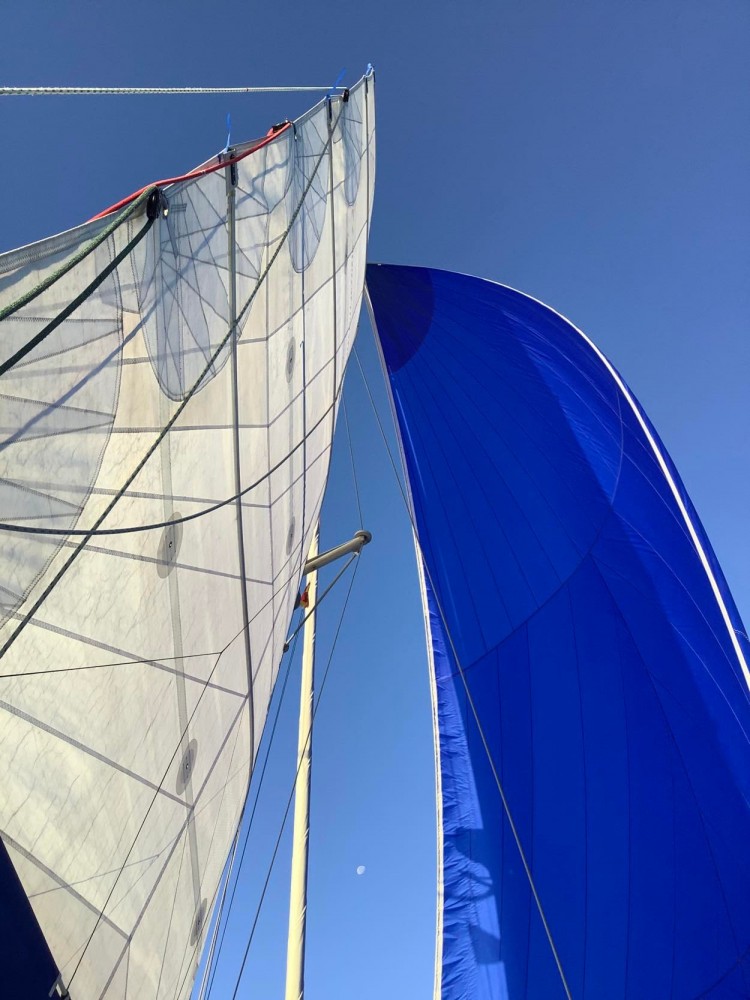
Power supply
Photovoltaic was available and was improved after the first season. For me, photovoltaic is the best option for power supply. Cheap, quiet, reliable and low-maintenance. In the Mediterranean, it actually generated all with a 400 Watt wind generator (at least in the Mediterranean).
Cooling
FRIDA has a large, well-insulated built-in cooler. The advantage of a cool box is that cold air does not flow out when the lid is open, as it does with a door, thus saving energy. In addition, I have retrofitted a small external 30L compressor cooler used as a freezer when needed (saves electricity). In the Mediterranean, I don't think it makes much sense to freeze
a large amount of food, as you can usually get it fresh everywhere. If you catch a big fish, however, you are very happy to have the freezer. Now that I've arrived in the Atlantic, I use
the freezer box more, because it's cheap to stock up on fish.
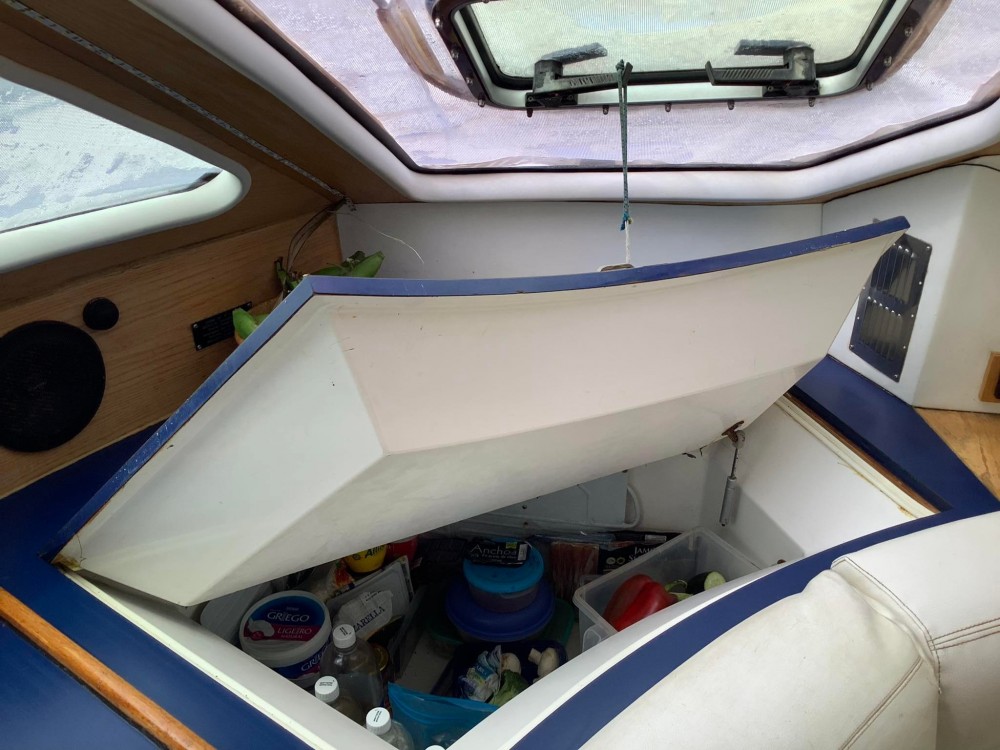
Heating
In the Mediterranean, I have always wintered in ports in Spain or Greece from the beginning of November until the end of March. Sometimes in a marina like Valencia with all the
facilities, sometimes in a less fancy harbour without any facilities in Greece. Outside harbours, we never required heating. We started with a mobile Chinese paraffin heater,
which we never actually used, as it seemed more like a ticking time bomb. Also on board, we had two 230V electric heating plates, which turned out to be very useful in the marinas with shore power. In Greece, we then retrofitted the ship with a diesel backup heater, which made us even more independent. We make hot water for showers with the machines or with 230V onshore.
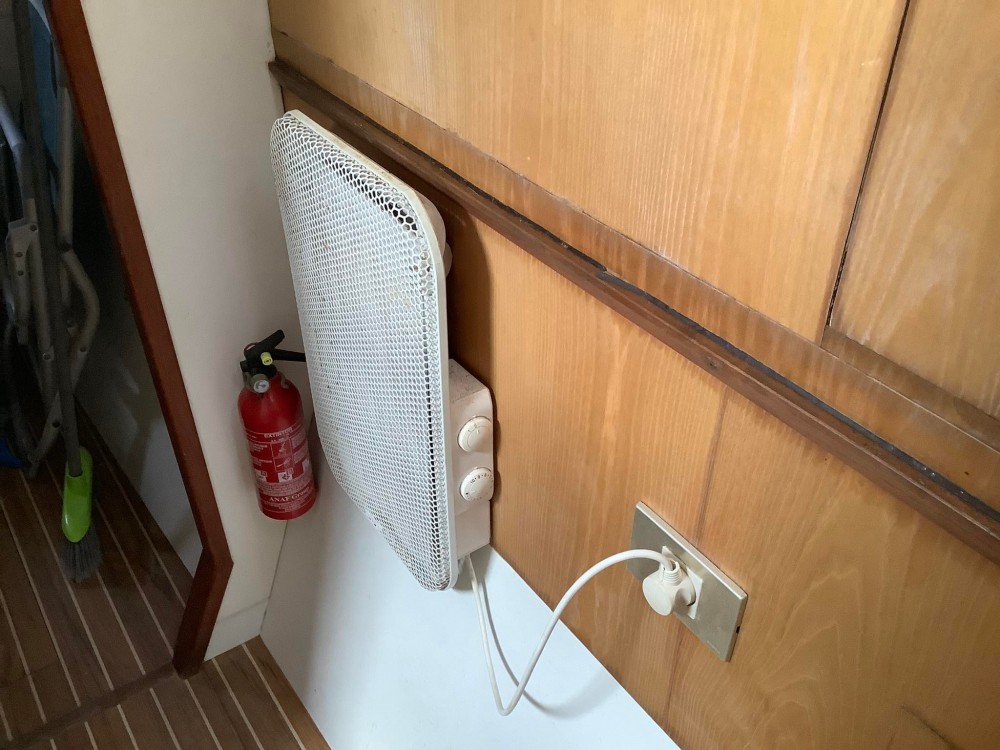
Water
As mentioned, we are at anchor all summer in the Mediterranean and all year in the Atlantic. FRIDA has a saltwater deck wash pump to clean the ship from sand, dust and mud
after anchoring. In the galley, we have a saltwater foot pump for pre-rinsing, which saves us a lot of water because we don't have to rinse everything with fresh water. Toilets are also saltwater-operated. We have 400-litre tanks for showers and drinking water. The drinking water comes from an extra tap that has an additional high-quality filter upstream. We have never had any problems with this, either with the taste of water or with our stomachs afterwards. At the beginning of our trip in 2017, it was very easy and cheap to bunker water everywhere in the Mediterranean. However, this has changed in the meantime and some marinas ask for up to 30€ to fill our 400-litre tank. In view of our trip in the Atlantic, we, therefore, decided to retrofit a simple watermaker (60L/h) and to have a few components and electronics on board as possible. Another advantage is that we don't have to constantly refill 400 litres of water which saves weight, as the watermaker has to run every few days anyway.
Safety
Both the insurance and the law prescribe the necessary safety equipment required on board. Of course, everyone should decide for themselves whether they want to take something extra along. For example, we always have a pre-packed grab bag and a checklist ready so that we can quickly pack the most important things in case of an emergency. It also contains the necessary items for survival on an island until rescue arrives. In addition to the basic equipment, we have an EPIRB for the boat or life raft/dinghy, an AIS emergency transmitter for each life jacket with a strobe light. During night watches we carry a small, inexpensive Bluetooth tracker that is normally used as a key finder. If someone goes overboard with it and drifts out of range, the mobile phone of the sleeping crew members sets off the alarm. The chances of rescue increase significantly. Of course, more expensive professional equipment is also available.
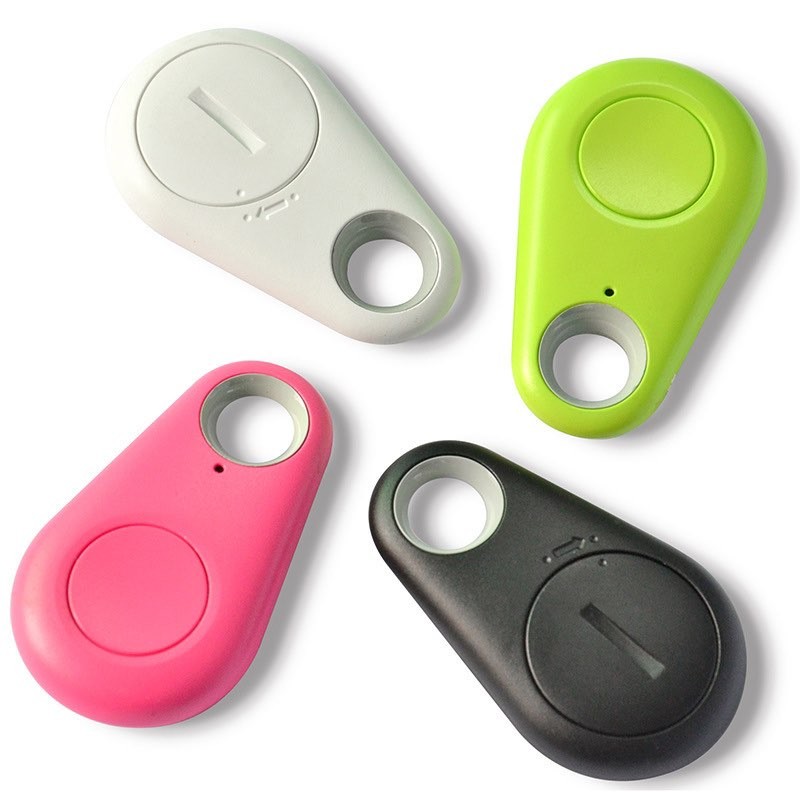
Tools
Here, too, I try to keep it as simple as possible. What is important for me is a stationary plotter with digital charts. You can have a mobile phone or tablet, but this should never be the main navigation tool, as it can very easily break. In addition to the plotter, FRIDA has two handheld GPSs, which are always ready with spare batteries in a tin box for protection during thunderstorms. An active AIS is also a handy feature. Especially at night, it makes navigation so much simpler in encounters with large commercial vessels and fish boats. However, beware, many sailors now blindly trust AIS and forget that by far not every ship is equipped with one. Radar is great, but you can do without it. We have used it in the Mediterranean maybe 5 times in 5 years, mainly to get the direction of thunderstorms and sail around them.
Once, halfway on my passage from Sardinia to Menorca, FRIDA was struck by lightning. All instruments and also the onboard computer for the autopilot failed. Since then we keep a
spare non-installed autopilot on board. In an emergency, the display, on-board computer etc. are quickly swapped.
You might also like
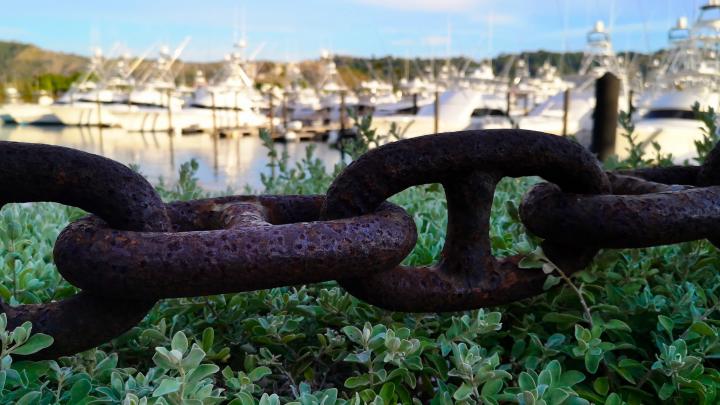 Transporting a Boat to Costa Rica: All You Need to Know
Transporting a Boat to Costa Rica: All You Need to KnowSep 14 2023Boating tips
U.S. Department of State statistics show that tens of thousands of American and Canadian expats and retirees have chosen to move to Costa Rica, and it’s not hard to see why. From the paradise beaches to the sunny weather, there’s a lot to love about this part of the world, and having your own boat there is a great way to make the most of the experience.
read full post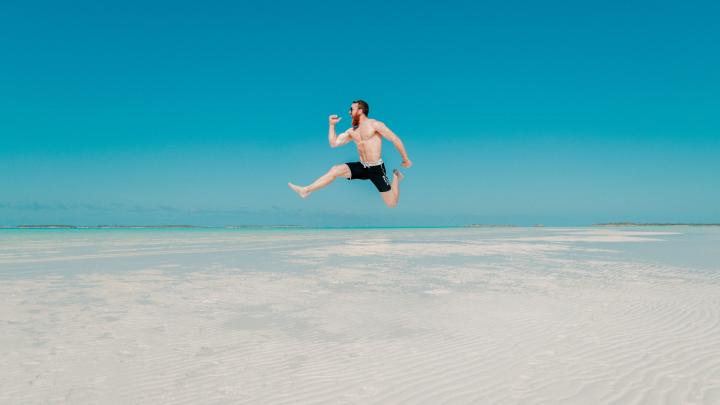 Bear Cut Sandbar - A Hidden Gem for Boaters
Bear Cut Sandbar - A Hidden Gem for BoatersFeb 06 2023Boating tips
If you're a boater in search of a hidden paradise, Bear Cut Sandbar is the place for you. This stunningly beautiful location is located just off the coast of Key Biscayne, Florida, and is the perfect destination for boaters looking for a relaxing day in the sun.
read full post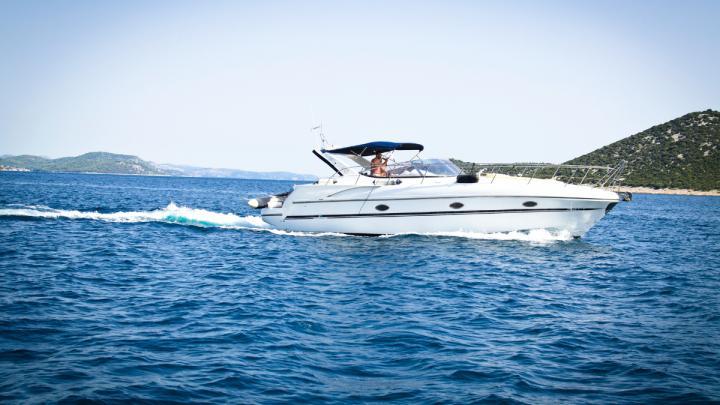 How To Keep Miami's Blue Waters While Boating Green
How To Keep Miami's Blue Waters While Boating GreenJan 05 2023Boating tips
As boaters in Miami, we have the privilege of enjoying the beautiful blue waters of the city. However, it is our responsibility to ensure that we are doing our part to keep these waters clean and healthy for all to enjoy.
read full post